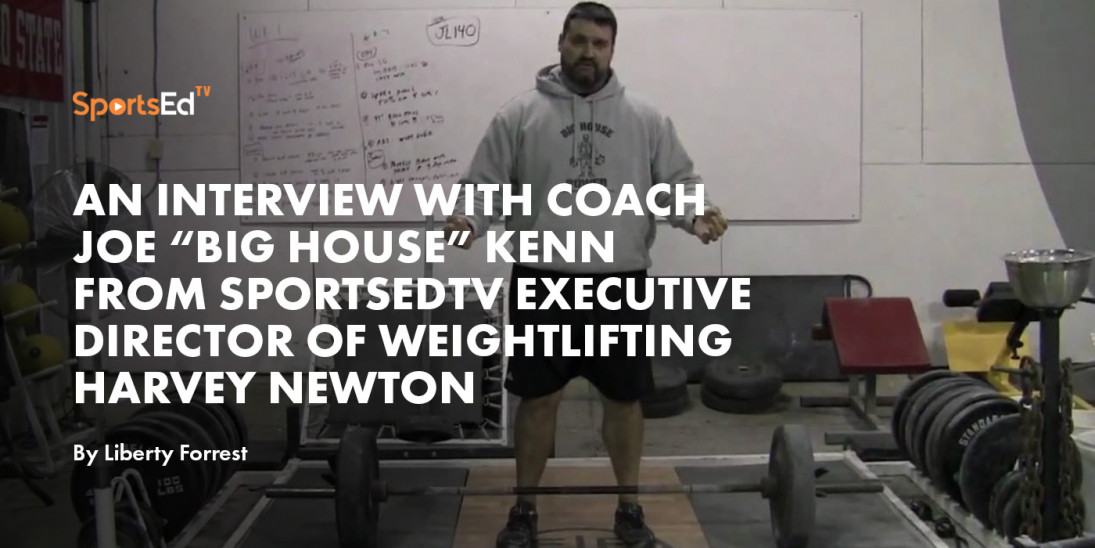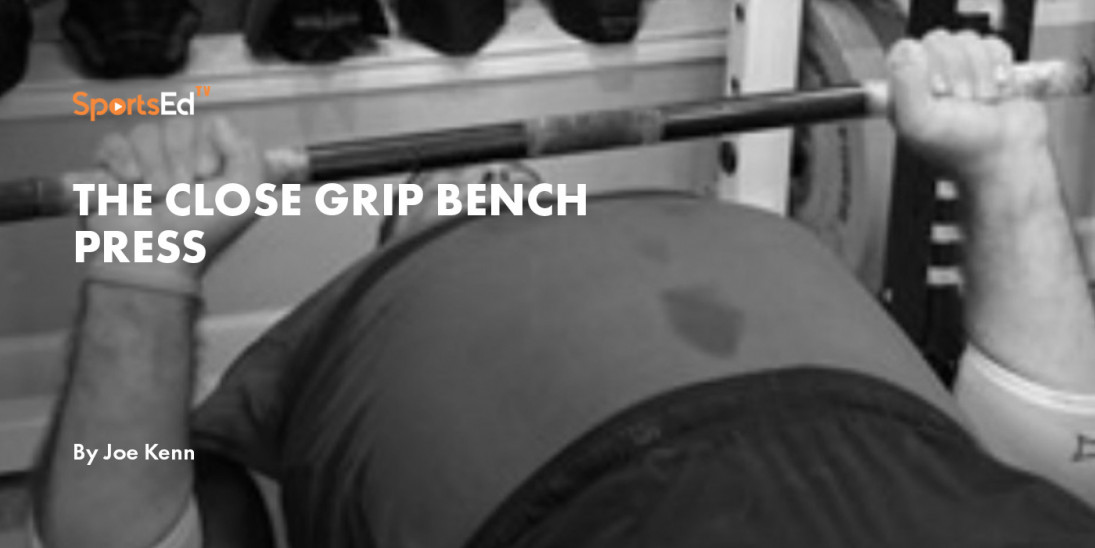Strength And Conditioning
Welcome and thanks for visiting...

An Interview With Coach Joe “Big House” Kenn from SportsEdTV Executive Director of Weightlifting Harvey Newton

HN: Coach, what is your advice for coaches and athletes impacted by the current pandemic, gym and school closures, etc.?
JK: From the beginning of the pandemic, with lockdowns starting in March 2020 to present, the pandemic has altered the state of performance training and life for all athletes. My first response to coaches who have reached out to me from the high school and college level was something I learned early in my professional coaching career: “The onus of training and preparation falls directly on the athlete!”
What I mean is, with limitations accessible face-to-face coaching, the need for virtual meetings, and the stay-at-home mandates, these athletes are/were not receiving the 24/7/365-day supervision and instruction they are used to having. On the other hand, in professional sports, because of the collective bargaining agreements, there are significant time limitations on coaches being able to work directly with their athletes. For example, in the NFL from the time the season is over until training camp the coach only has a nine-week window of opportunity to work with the athletes on-site (with the exception of mini-camp, this is also an optional participation program). The rest of the time, it is the intrinsic motivation of that athlete to develop a structured daily routine to stay in shape for the upcoming competitive season.
What does this mean? It means we need to educate our athletes to being independent. We need to teach them, guide them, mentor them, to be self-led, peer led, rather than coach fed! We need to teach them the capabilities to set up a daily routine and time management plan. We need to teach them what life will be like when they don’t have a coach telling them where they are supposed to be every hour of the day or an academic advisor creating their class schedule for them. And on top of that, how to follow the rules and mandates that the governing bodies of each county, state, and country have put into effect to help keep us as healthy as possible during this trying time.
The training plan is secondary. This is a tremendous time, as coaches, to truly show the other side of our responsibilities. Create self-sufficient, positive influencing individuals in society. If we can help them establish a time management plan that works for their specific situation, a training time, a study time, etc., we have helped them build the confidence of being able to construct an independent life plan.
As far as the training dynamics, I think it is pretty simple. First, regardless of availability, an athlete needs absolutely no equipment to perform dynamic preparation drills, sprinting, agility drills, and conditioning work. Athletes can and should be able to keep themselves “in shape.”
Strength training during this time is a great way to get back to what a lot of athletes are missing, relative/gymnastics strength. Bodyweight training is highly underrated and extremely effective. The types of programming that you can create are endless. The bonus would be those who have access to equipment to utilize for external loading. If we have done a solid job of explaining programming to the athlete, they may be able to create a solid basic plan on their own. If not, we are only a phone, Face Time, Zoom call away.
HN: Lots of athletes say they are strength training when actual intensity and effort are unlikely to produce increases in strength. This may be particularly true with endurance athletes who seem to like to handle light weights and higher repetitions that normally are not associated with real strength gains. What is your advice to such athletes?
JK: I answer this the same way I would for those that don’t think it is necessary for power athletes to do aerobic-based drills. Every athlete, regardless of sport, needs programming that enhances strength, power, speed, and lean body mass. The ratio of those components is determined with collaboration between the sport coach and the performance coach.
For the purpose of this specific case I would say, based on my experience with track and field/cross country and swimming for the longer distanced events, all coaches speak about the need for a final kick or sprint to the finish. This tells me, as the program designer, there needs to be some explosive strength and absolute strength components in the training plan to give the athlete the desired transferable traits needed to “switch gears” and finish strong. In the case of the endurance events, this doesn’t need to be the priority, but it has to be valued.
HN: Athletes often choose improper exercises for their needs, or they perform proper exercises incorrectly. What is your advice to athletes who do not have a good strength coach to supervise their training, i.e. they may be training on their own?
JK: Training solo, regardless of experience, is tough. As a coach for over 30 years who trains alone, I miss having eyes on me in the training hall, as well as someone with whom to discuss the training plan. In this age of social media platforms and the internet, there is a plethora of information that is instantaneously available. It is only one click away, or you can perform a web search.
The key for these athletes when researching programming and exercise technique videos online is to investigate the individual who is offering the information. I call this “peeling the onion.” You need to do your due diligence on who is delivering the message. Peeling the onion is a reference check. Some questions could be:
- What is the individual’s coaching background and experience?
- What educational background do they have? Are they certified?
- Do they offer online services?
- Can you send in videos of training for technique analysis?
- Do they consult?
- Which coaches or programs available fit your needs and goals?
My advice is to seek information and ask questions that helps you choose wisely.
Coach Kenn Footnote:
It is an honor to receive questions from Coach Newton. For those who have followed my career, truth is you may have never heard of me if it wasn’t for Coach. Coach Newton was the executive director of the National Strength and Conditioning Association in the mid ‘90’s when I submitted the first-ever publication of the Tier System Training Model to the NSCA professional journal, Strength & Conditioning. After receiving some negative reviewer comments on my model of training I became disenchanted and was not going to pursue publication. A phone call from my former assistant Rich Gray to Coach Newton changed the path and journey of my career. Coach was adamant that I answer the reviewer questions and comments that were given to me. He said, “Coaches need to read this!” Here is a world-renowned weightlifting coach who had the foresight to see that this unique thought-out program based on some different thoughts on exercise order and choice was an important piece of information to the coaching world. This told me to never look back and stick to my beliefs. Now, over 25 years after that publication, the Tier System is known across the globe. A sincere “Thank-you, Coach.” You inspired me then and now to keep hold of my beliefs.





